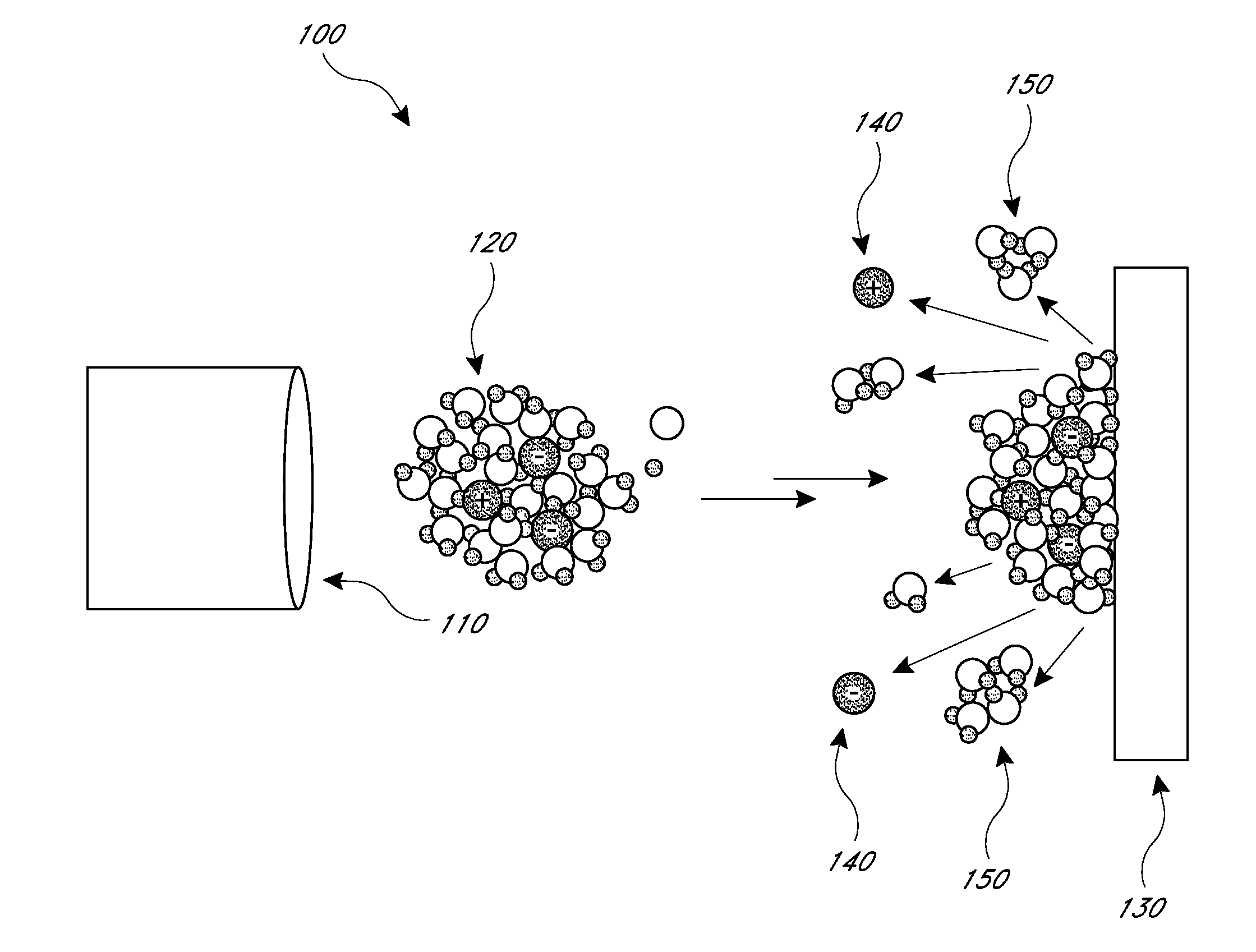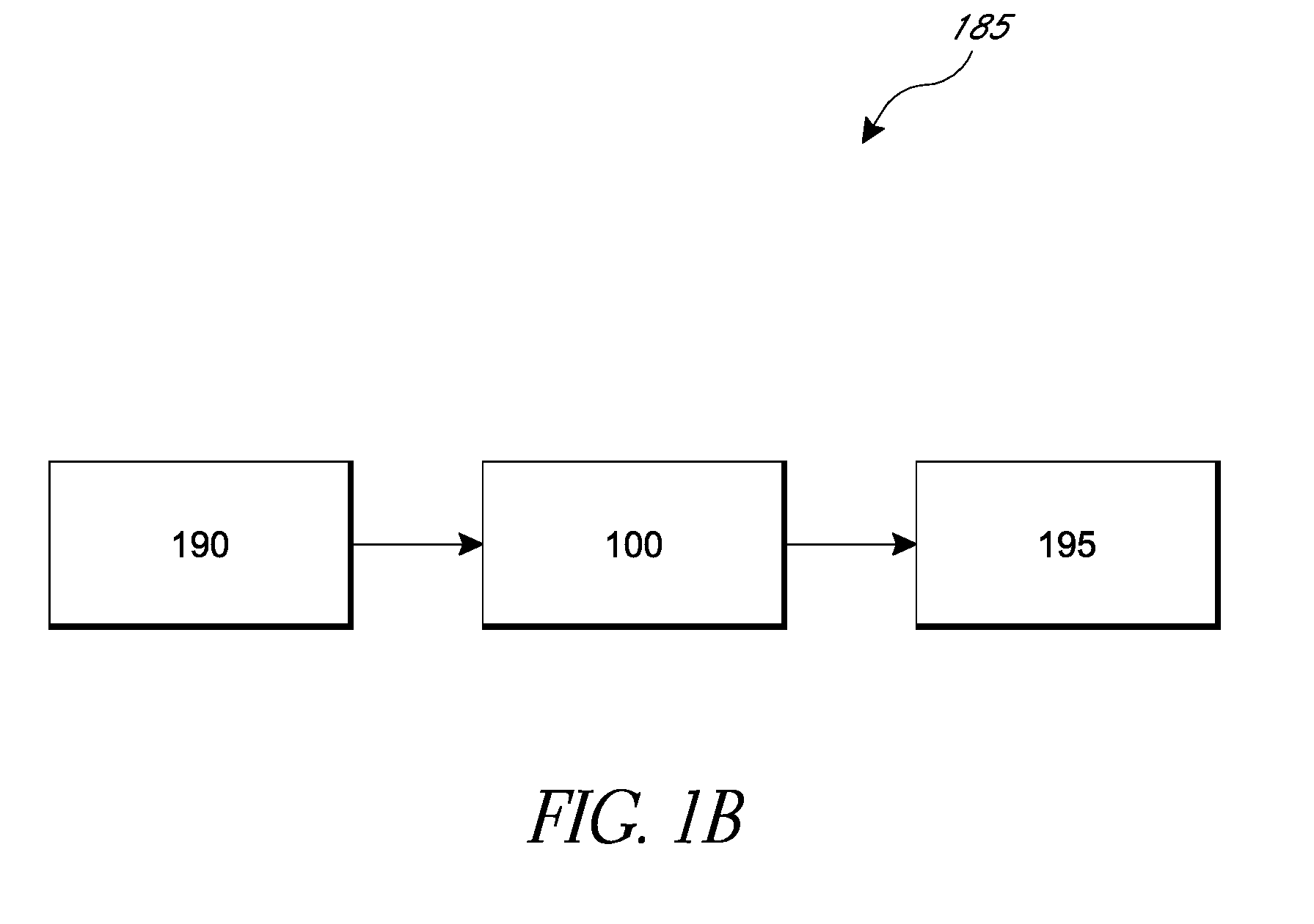Collision ion generator and separator
a technology of collision ion and generator, which is applied in the direction of particle separator tube details, separation processes, instruments, etc., can solve the problems of low sensitivity of this technique, chemical derivatization fails in case of larger molecules, and is not feasible for evaporation of these compounds prior to electrical charging
- Summary
- Abstract
- Description
- Claims
- Application Information
AI Technical Summary
Benefits of technology
Problems solved by technology
Method used
Image
Examples
example 1
Ionization of Surgical Aerosol
[0070]The system illustrated in FIG. 5 was used in this example. Surgical electrocautery was done using a handpiece containing a monopolar cutting electrode. The cutting blade was embedded in an open 3.175 mm diameter stainless steel tube which was connected to a flexible polytetrafluoroethylene (PTFE) tube 2 m long and 3.175 mm in diameter. The PTFE tube was used to transport the aerosol containing gaseous ions from the surgical site to the mass spectrometer by means of a Venturi gas jet pump. The Venturi pump was operated at a flow rate of 20 L / min. The pump exhaust was placed orthogonally to the atmospheric inlet of the mass spectrometer.
[0071]Porcine hepatic tissue was sampled using the electrocautery system as just described. The surgical smoke was lead into the modified atmospheric interface of an LCQ Advantage Plus (Thermo Finnigan, San Jose, Calif.) mass spectrometer and the spectra produced analyzed.
[0072]The sample does not contain few if any ...
PUM
| Property | Measurement | Unit |
|---|---|---|
| temperatures | aaaaa | aaaaa |
| temperature | aaaaa | aaaaa |
| diameter | aaaaa | aaaaa |
Abstract
Description
Claims
Application Information
 Login to View More
Login to View More - R&D
- Intellectual Property
- Life Sciences
- Materials
- Tech Scout
- Unparalleled Data Quality
- Higher Quality Content
- 60% Fewer Hallucinations
Browse by: Latest US Patents, China's latest patents, Technical Efficacy Thesaurus, Application Domain, Technology Topic, Popular Technical Reports.
© 2025 PatSnap. All rights reserved.Legal|Privacy policy|Modern Slavery Act Transparency Statement|Sitemap|About US| Contact US: help@patsnap.com



